Filipa and Francisca - Professional Course of Commerce
Portuguese Gastronomy
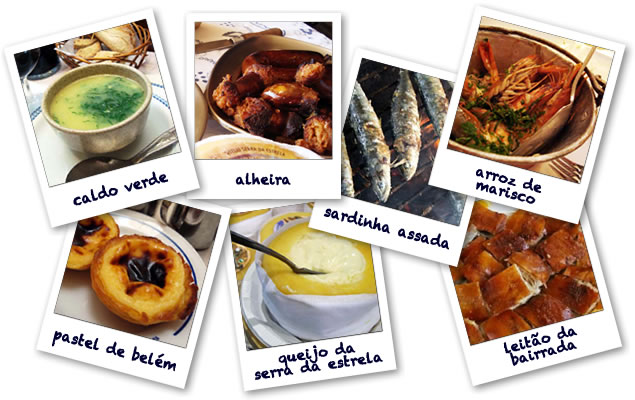
In this work we will show you how Portuguese food has a wide variety of typical dishes and delicacies. We also want to explain why Portuguese gastronomy looks so good and why there are so many people wanting to try our dishes.
The Portuguese food shows Atlantic and Mediterranean influences, as can be seen in the amount of fish consumed.
The basis of Mediterranean gastronomy, consists of the trio of bread, wine and olive oil throughout the national territory, adding vegetables, as in various soups, and fresh fruits.
The meat, especially the pork, is a set of regional dishes and snacks, where the hams and sausages stand out.
With maritime discoveries, Portuguese gastronomy quickly annexed the use of spices such as pepper or cinnamon, as well as sugar, beans and potatoes, which were adopted as essential products.
The variety of regional dishes can be found even in restricted areas.
Two neighbouring cities may present the same dish with the same name, but may differ greatly in the way they are cooked, even if it is the same basic recipe.
The various dishes vary greatly from region to region.
Typical Portuguese Dishes
Portugal is a country where both meat and fish are of the highest quality.
“Cozido à Portuguesa”
It is a Portuguese dish of excellence. Originally from the Alentejo region, has now spread to the whole country. It consists of a mixture of various vegetables (beans, potatoes, cabbage, turnips and rice); meats (chicken, ear, entrecote and pork meat, beef) and sausages (meat sausage, farinheira, black pudding and blood sausage).
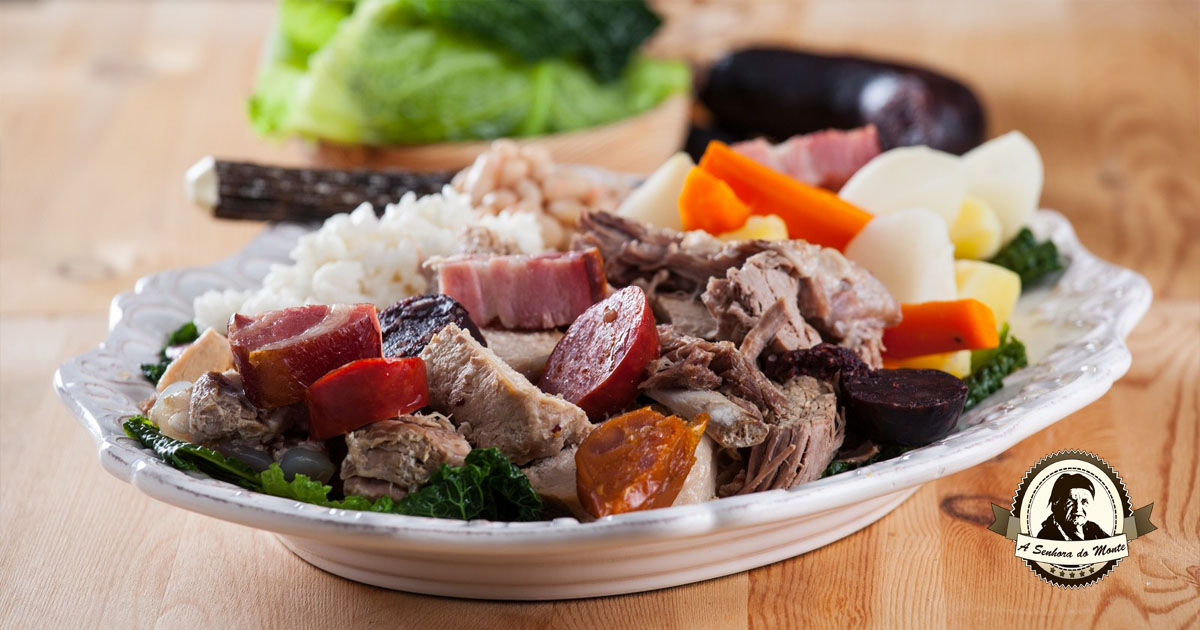
“Sarrabulho”
It is native to Northern Portugal. It consists of using pork or kid, blood and seasoned with cumin kids. With this dish also the "Papas de Sarrabulho" are made (with bread).
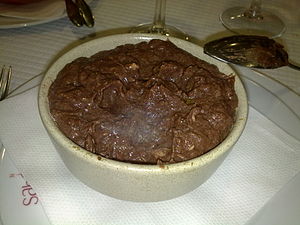
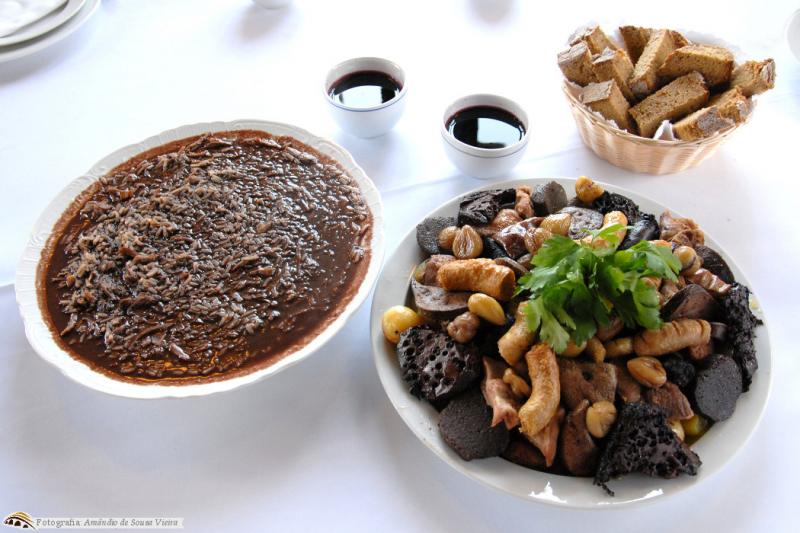
“Tripas à moda do Porto”
It is by excellence the typical dish from the city of Porto. Consists of several types of meat, beans and sausages.
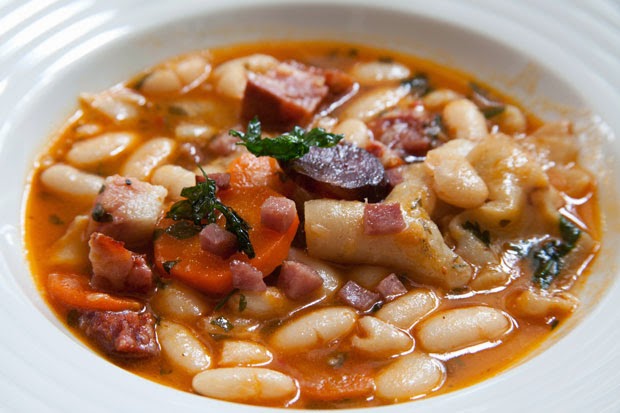
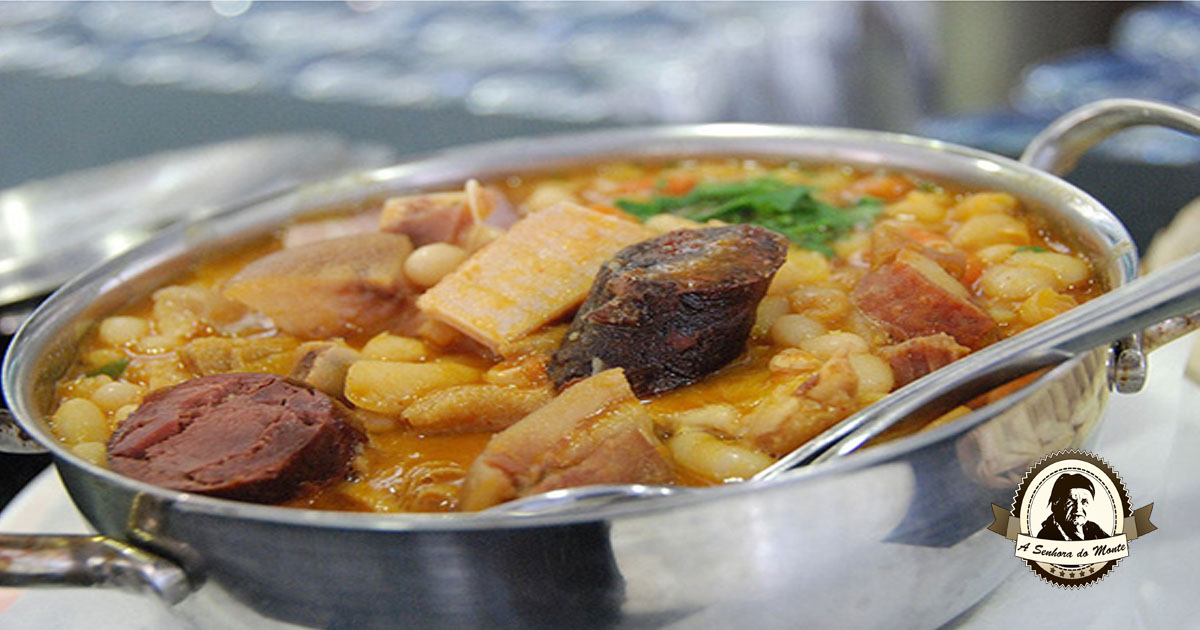
“Francesinha”
This dish originates in Porto and is a real national bomb. It consists of several meats (such as steak), sausages (ham, cheese, sausage...), a sauce with wine and beer, egg and bread. There is no way to resist this dish!
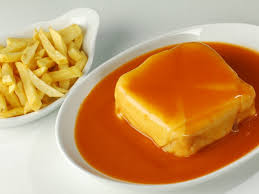
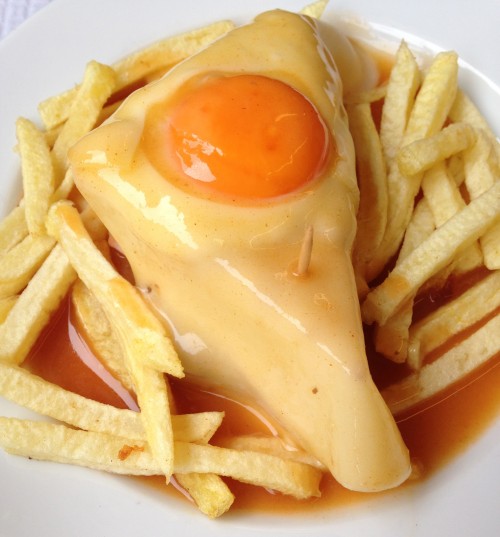
“Leitão da Bairrada”
Natural dish of Beira Litoral (more specifically, Mealhada). It differs from the suckling pig of Negrais by the fact that it is not cooked open. It is stuffed on the skewer in a wood oven, taking as a filling a paste based on salt and pepper. With this meat, sandwiches and cakes are also made.
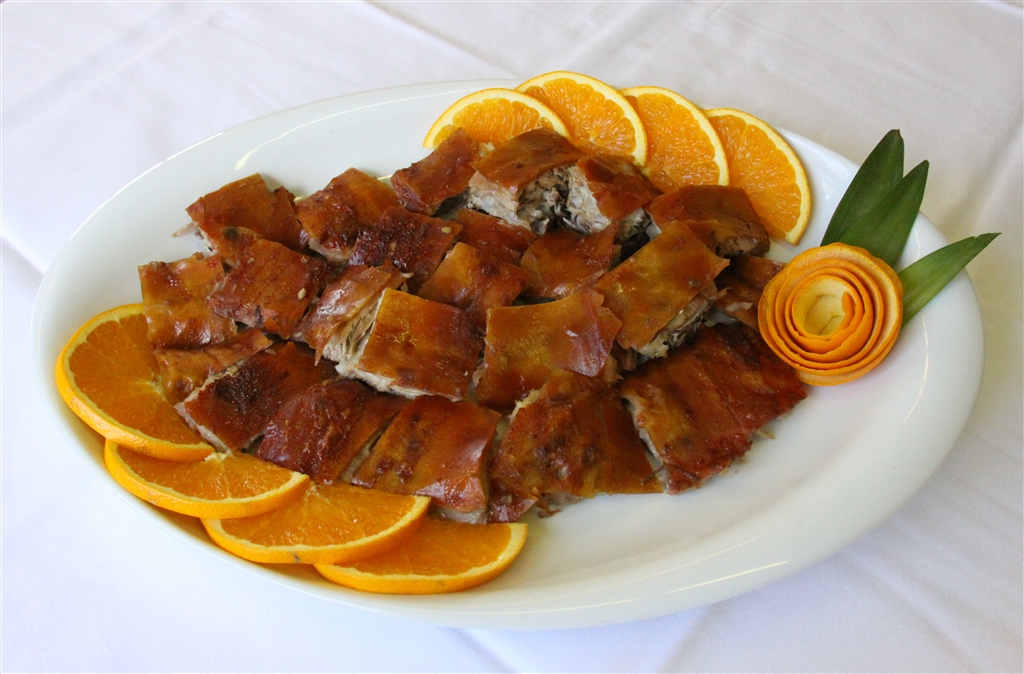
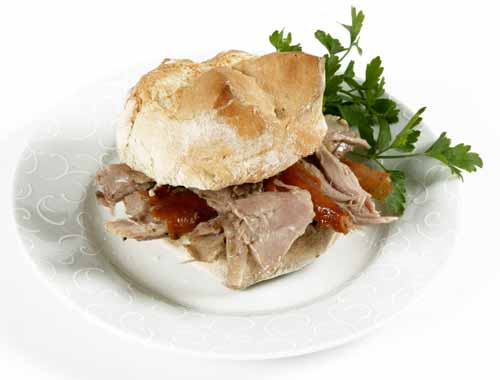
“Pastel de Belém”
Natural from Belém, in Lisbon. It is one of the popular specialties of Portuguese sweets. Although they can be enjoyed in many cafes and pastries, the original recipe is exclusive to Lisbon. There, the Crayons of Bethlehem, are still eaten hot.
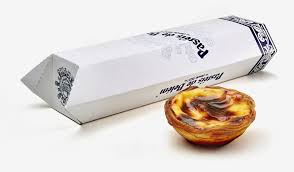
“Ovos-moles”
Sweet typical from Aveiro, in the centre of the country. They consist of sweet egg yolk, wrapped in shells on a wafer as thin as the sheet of paper.
“Alheira de Mirandela”
This “alheira” is from Mirandela, in the Northeast of the country, and has an interesting history, as it was invented to face famine in times of war. Nowadays, it is a classic among smoked sausages and chorizo. This porkless sausage has become a classic dish of Portuguese gastronomy and is usually served with a starry egg and potato chips.
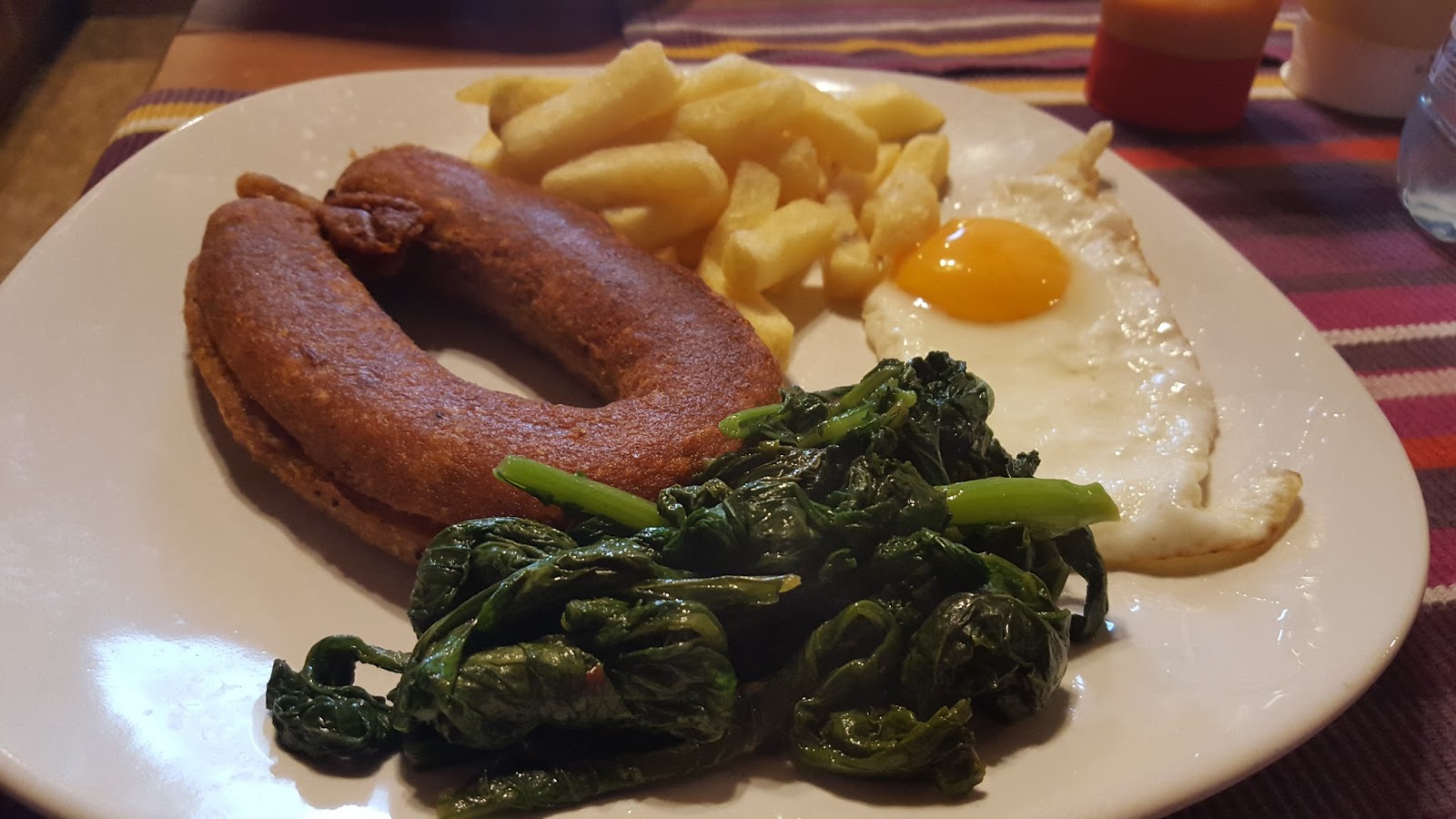
“Bacalhau à Brás”
It is a typical Portuguese cod dish, native to Bairro Alto, in Lisbon. It is one of the most popular dishes made with this fish. Consists of shredded cod, straw crisps, fried onions thinly sliced, scrambled egg, olives and chopped parsley.
The taste depends on the components of the recipe, mainly the amount of onion in relation to the cod and the oil used to make this dish.
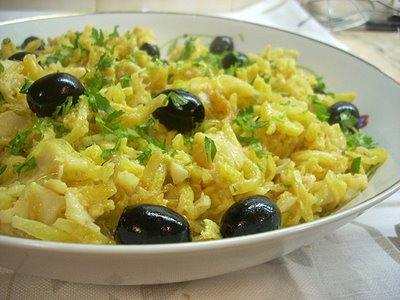
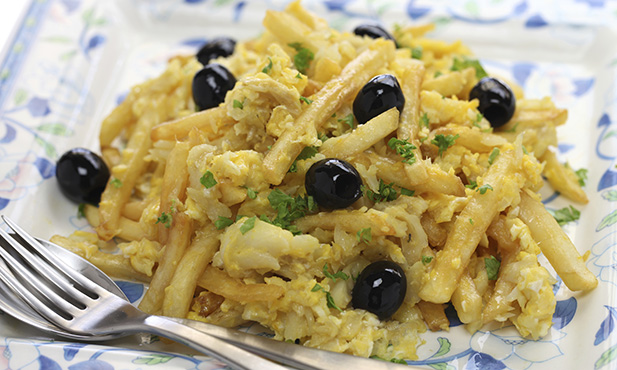
“Queijo da Serra”
Natural of Serra da Estrela, the highest point in the continental part of the country. Serra's cheese is made with sheep's milk, has an intense flavour and a creamy texture.
It is almost unknown outside of Portugal. It varies between the soft and buttery and the harder and with a stronger flavour, making it a delight for cheese lovers.
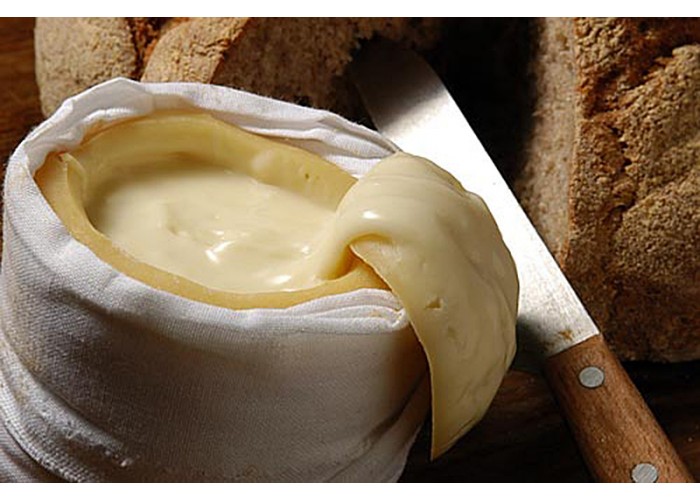
“Caldo Verde”
It is a frequent presence in traditional Portuguese festivities. The green broth is a soup made with potatoes, onions, cabbage and chorizo slices. It can be served for supper or before any main course.
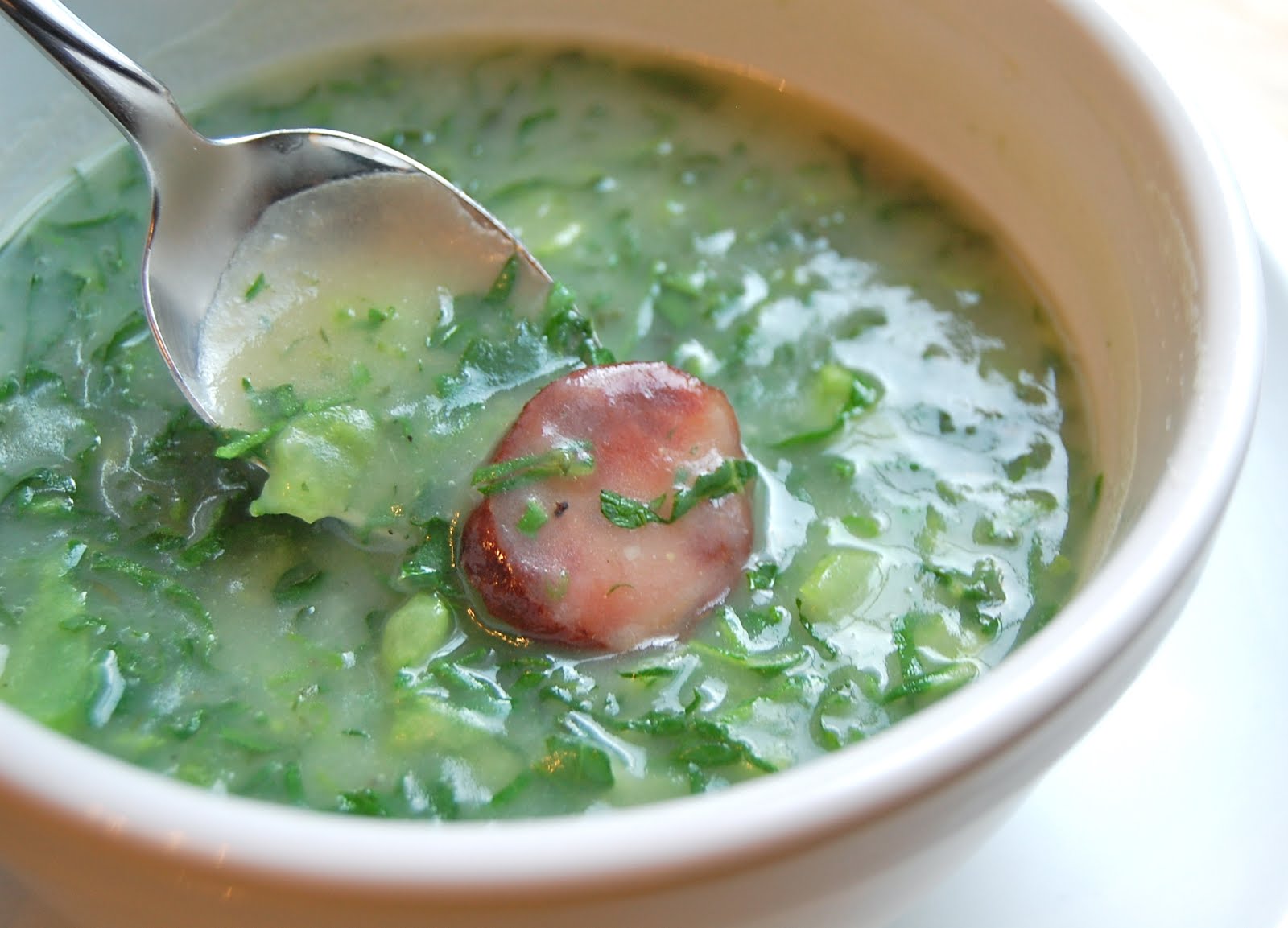
“Sardinhas Assadas”
It is a typical dish both in Lisbon and Porto. It is a combination of fresh fish and smoked grilled taste. They can be found both in restaurants and on street stalls during Saint Anthony's and Saint John’s feasts in June.
They can be served on top of cornbread, with a salad of roasted peppers or cooked vegetables and do not forget to cover them with a generous amount of olive oil to leave them with a better flavor.
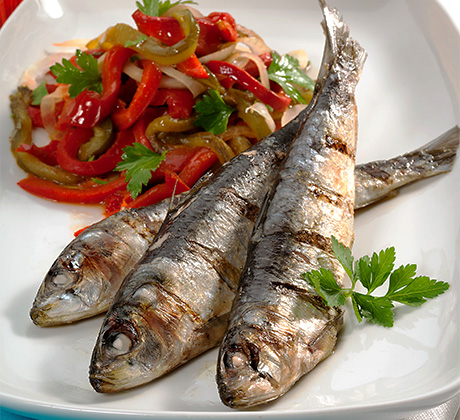
“Queijadas de Sintra”
As the name suggests are natural Sintra which is 20 minutes from downtown Lisbon by car. These egg cakes are made with curd, sprinkled with cinnamon to make them even more interesting.
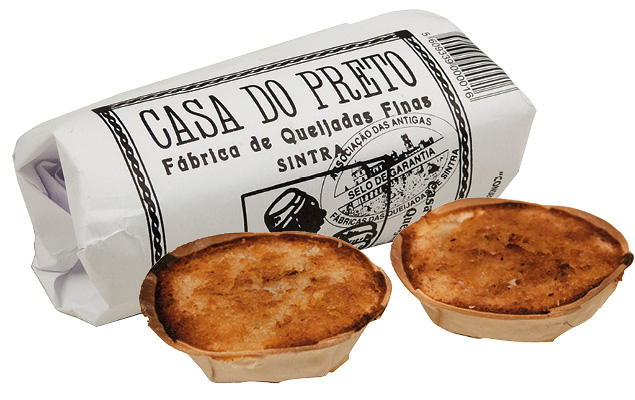
“Polvo à Lagareiro”
It is a typical dish of the North of Portugal. Octopus is usually served at ceremonies or special occasions (such as Christmas Eve). It is also served as entrance to several restaurants, usually cold, with onions and parsley.
Octopus à Lagareiro is a recipe for roasted octopus, topped with hot olive oil, where leeks and garlic and garlic cloves must have been sautéed and accompanied with potatoes.
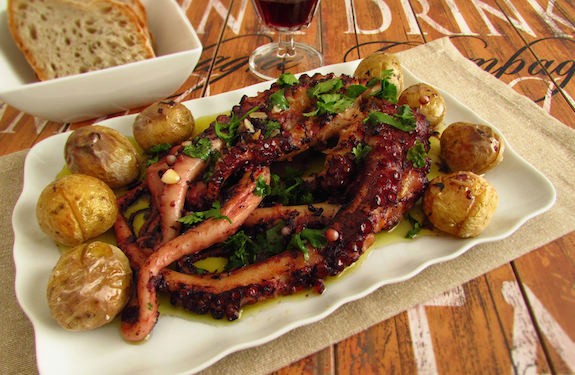
“Pão-de-ló”
It is one of the most traditional Portuguese cakes, a frequent dessert during the Christmas and Easter season and is sold in most pastries wrapped in parchment paper. Smooth, simple and bulky, this can be accompanied alone, with a ball of ice cream or with cheese.
“Torta de Azeitão”
In Portugal, egg-based desserts are very common. This pie is typical of Azeitão, a region of the council of Setúbal, in the South of the country.
It is very covered with egg yolk, egg-soft, cinnamon, sugar and water and finally rolled to perfection.
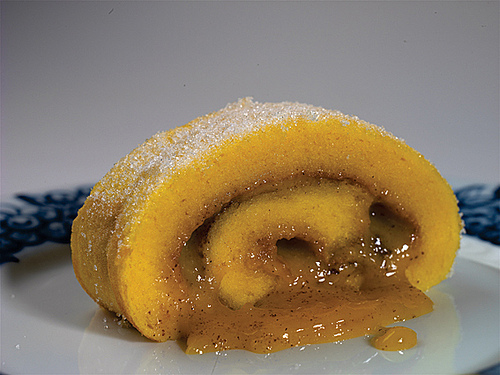
“Pastéis (Bolinhos/Sonhos) de Bacalhau”
A famous Portuguese saying claims that there are more cod recipes than days in a year.
They are a true standard of Portuguese cuisine. Cod can, for example, be shredded to form a kind of fish cakes. Golden and with a crisp outer bed and a soft interior, these can be served as starter or main course accompanied with rice.
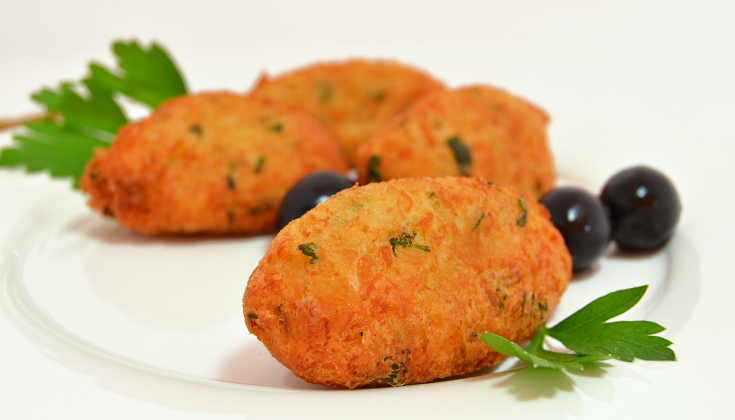
“Arroz de marisco”
It is a traditional dish of Portuguese gastronomy and its origin is the beach of the scallop in Marinha Grande.
The dish is made by several types of seafood (prawns, clams, crabs, lobster, mussels and cockles). Shellfish combinations vary from region to region, depending on the recipes, availability and price of each shellfish.
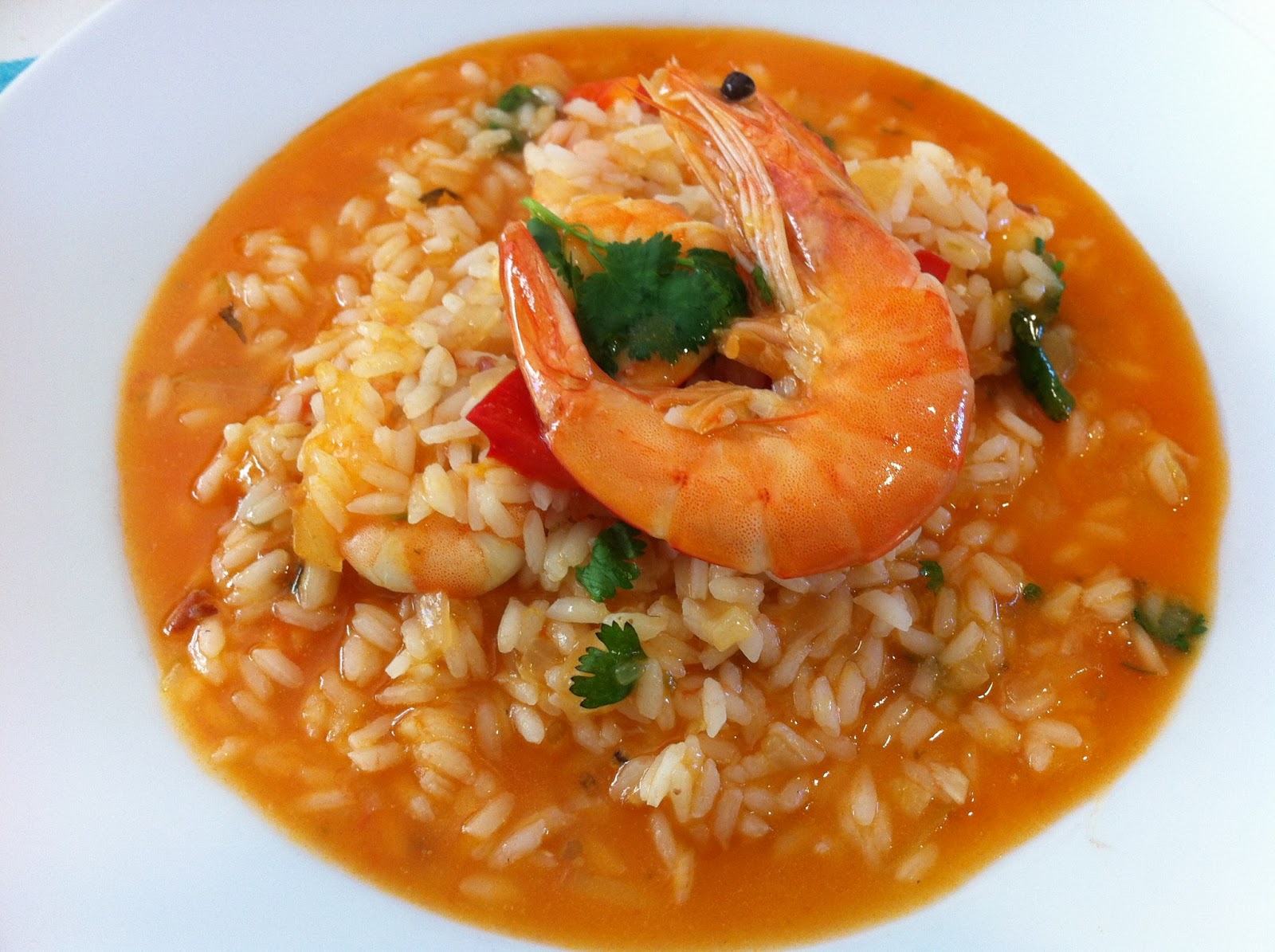
Now we believe it is high time to say: be very welcome to Portugal and “bon appétit”!
-----------------------------------------------------------------------------------------------------------------------------------------------------------------------------------------------------------------------
Class 12 Year 11 - Tiago Paquete and Tiago Vieira
Portuguese Gastronomy
Today im going to introduce you to some of Portugal's great dishes:
As an entrance dish I'm going to talk about "Caracois à Algarvia" that is boiled snails with salt and oregon.
Another great entrance dish is "Bolinhos de Bacalhau" which is a little cake like thing with boiled cod and potatoes blended with eggs and parsley.
As an main dish I'll talk about about "Caldeirada de Sardinhas Frescas". This dish consists of fresh sardines stewed with potatoes, peppers and seasonings.
Another main dish that is delicious is "Arroz de Forno à Antiga" which is made of stir beef, pork and chicken with chopped onions, rice and a teaspoon of seasonings.
As a soup "Caldo Verde" (Green Soup) is a must. We, the Portuguese, like "Caldo Verde" a lot. It’s a soup that has potatoes, cabbage and "chouriço" (smoked sausage) in slices.
Another great soup is Sopa de Pedra (Stone Soup). This soup is typical in Almeirim. Have you ever heard the tale of Stone Soup"? Ask the people of Almeirim. This delicious and almost main-course soup is made of kidney beans,pork ear, "morcela & chouriço" (Portuguese smoked sausages), chopped potatoes, vegetables and seasoning.
As a dessert I'm going to talk about "Leite Creme"(Creme Brulee). It’s a popular caramelised dessert that is made of egg yolks, milk and sugar.
--------------------------------------------------------------------------------------------------------------------------
